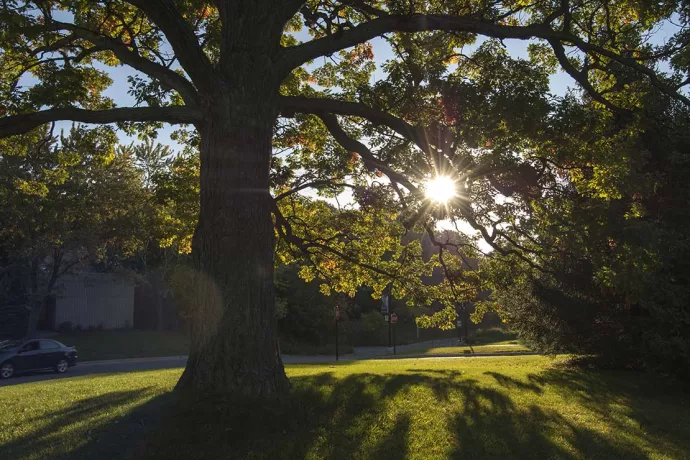
Sharing U of T's New Land Acknowledgement
To the UTM community,
We have the privilege to work, study and research on a beautiful campus, bordered by the Missinnihe, the trusting creek—called the Credit River by French and British colonists who, at the river’s mouth, traded goods on credit with Indigenous peoples, who had travelled and stewarded these waters from time immemorial.
This privilege entails a responsibility to recognize the land’s deep and vibrant history; to sit with the truth that comes before reconciliation; and to respect and understand the unique, enduring relationship between Indigenous peoples and the territories on which we now work.
In consultation with the Mississaugas of the Credit First Nation (MCFN), we have revised U of T’s Land Acknowledgement accordingly. Chi-miigwetch to MCFN for co-creating a text that better represents their past and present identity:
I (we) wish to acknowledge this land on which the University of Toronto operates. For thousands of years it has been the traditional land of the Huron-Wendat, the Seneca, and the Mississaugas of the Credit. Today, this meeting place is still the home to many Indigenous people from across Turtle Island and we are grateful to have the opportunity to work on this land.
The revised land acknowledgement represents one of many necessary steps toward realizing a pillar of our institutional future: to make UTM a more deserving home for Indigenous students, staff, faculty, librarians and community members.
We look forward to instituting additional changes together, with policy rooted in the Calls to Justice of the Final Report of the National Inquiry into Missing and Murdered Indigenous Women and Girls and in the Calls to Action of U of T’s response to the Truth and Reconciliation Commission: “Answering the Call: Wecheehetowin.”
To best express our commitment, we encourage you to re-read the calls and to access the learning resources available at UTM’s Indigenous Centre and U of T’s Office of Indigenous Initiatives. We also encourage you, in the words of Justice Harry LaForme, to use the new land acknowledgement with an intent that matches its meaning—as a recognition that the land represents a core of Indigenous identities; a basis for Indigenous knowledge keeping; and a foundation for reconciliation.
Alexandra Gillespie
Vice-President and Principal
University of Toronto Mississauga
